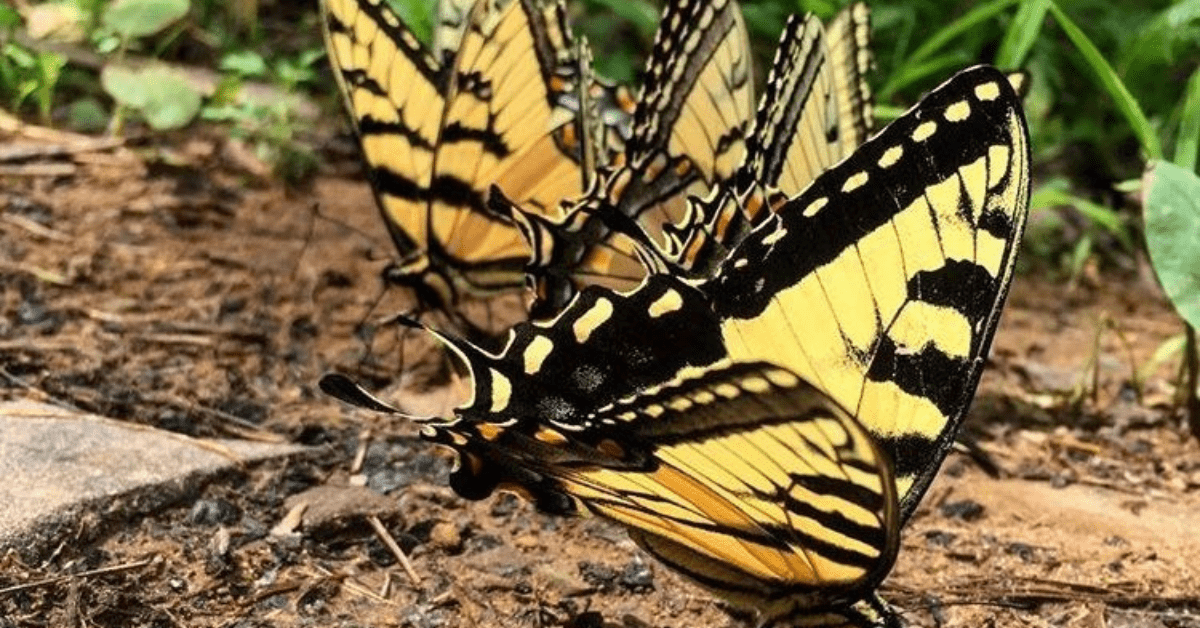
Nature’s Best Hope: Contributing to Functional Ecosystems
By Jessica Wen
Last spring, Wild Virginia featured Nature’s Best Hope by Doug Tallamy for our book club, and we learned a lot about what actions we as individuals can take to improve and support functional ecosystems.
As the warm weather arrives at full force, we anticipate many of you will be dusting off your gardening tools to reinfuse your yards with the flowers, vegetables, and other plants that disappeared over the winter. Therefore, we thought this would be the best time to introduce some considerations for your plantings.
Tallamy is an entomologist at the University of Delaware and he has a passion for motivating people to be more aware of their impact on the environment. In his book, he highlights the accelerating deterioration of biodiversity and the ecosystems that support us. Tallamy emphasizes the importance of plants as the main driver of all terrestrial and aquatic life. They capture energy from the sun, which then transfers to the rest of the living world through consumption, producing oxygen which none of us can live without. Tallamy uses the term “functional ecosystem” to capture this concept: because every element within our environmental network provides some function that contributes to the survival of others.
However, most of our society diminishes the importance of functional ecosystems, trading it in for novelty and charm. For example, Tallamy shares the practically useless practice of having large lawns. Though they add some green to our communities, these lawns realistically contribute very little good to ecosystem health. Rather, they ruin watersheds with the abundance of fertilizers and pesticides that we use on them, and they can create dead zones in our water bodies.
Tallamy urges a cultural change in our society. Rather than “being at war with nature,” we should learn to share the planet, restoring the areas we have previously dominated and consequently damaged. One way we can do this is by being more conscientious about the kinds of plants we grow in our yards. Rather than growing an invasive flower simply for its “unique beauty,” grow an oak tree. Oak trees have an environmental function: they provide homes for small animals, food for caterpillars, and consequently food for birds.
FUNCTIONAL ECOSYSTEMS
In his book, Tallamy describes the idea of a “homegrown national park” as everyone landscaping their yards with ecological function as a consideration. This will create the natural areas, the kind we typically travel to national parks to find, ones that are full of life, beauty, and solitude. He urges us to choose both beauty and functionality by choosing native plants that benefit our ecosystems in these “homegrown national parks”.
In Nature’s Best Hope, Tallamy urges another important benefit from landscaping our yards with functional ecosystems in mind: improving the connectivity for traveling wildlife, one of Wild Virginia’s major areas of focus. The author shares that by creating more patches of functional ecosystems, we help wildlife have the space they need to move to find food, shelter, mates, and to adapt to this changing world.
Wild Virginia’s ecological connectivity campaign has been driving action towards making Virginia safer for wildlife through reducing habitat fragmentation caused by roads and other developments. If you are looking for some ways to directly contribute to this important movement, we urge you to read Doug Tallamy’s book, Nature’s Best Hope, to start being more aware of how to make your living areas more conducive to safe wildlife passages.
LEARN MORE
Attend one of Wild Virginia’s upcoming online events to learn about ways you can get involved.
Watch this podcast that Doug Tallamy guest starred in, talking about his book, Nature’s Best Hope.
RESOURCE LIST
This is only a jumping-off point. There is a wide variety of resources available online that you can use to educate yourself on ways you can help benefit the natural world we live in.
Hummingbird Hill Native Plant Nursery – This is a plant nursery located near Charlottesville, VA. This small, family-owned business provides a wide variety of native Virginia plants, including ferns, trees, grasses, vines, etc. Wild Virginia members get 10% off!! Check out their website here.
Little Bluestem nurseryis a new business partner in Afton, Virginia. They also offer 10% off to Wild Virginia members. You can check out their selection and place an order here.
Virginia Native Plant Society (VNPS) is a nonprofit organization devoted to appreciating Virginia’s native plants and habitats and conserving its heritage. Check out their website here. They also have a terrific comprehensive list of plant nurseries that sell primarily native plants, which can be found here.
Plant Virginia Natives – This is a terrific resource if you want to learn where to start when landscaping your yards with plants native to Virginia. They describe why you should grow native plants, what kind of plants are native, etc. Their guide gives fantastic inspiration and knowledge you will need when getting started! Their website can be found here.
Native Plant Finder – Not sure where to start? Use your zip code to find what plants are native to your area and provide the greatest ecological function. The website can be found here.
Virginia Department of Wildlife Resources (VDWR) provides a great guide on how to improve your natural environment to make it more conducive to wildlife, providing a Habitat at Home guide as well as Habitat Gardening for Wildlife guide (and so much more). They also have information for landowners, schools, and businesses. There’s a lot to learn here! Their website can be found here.